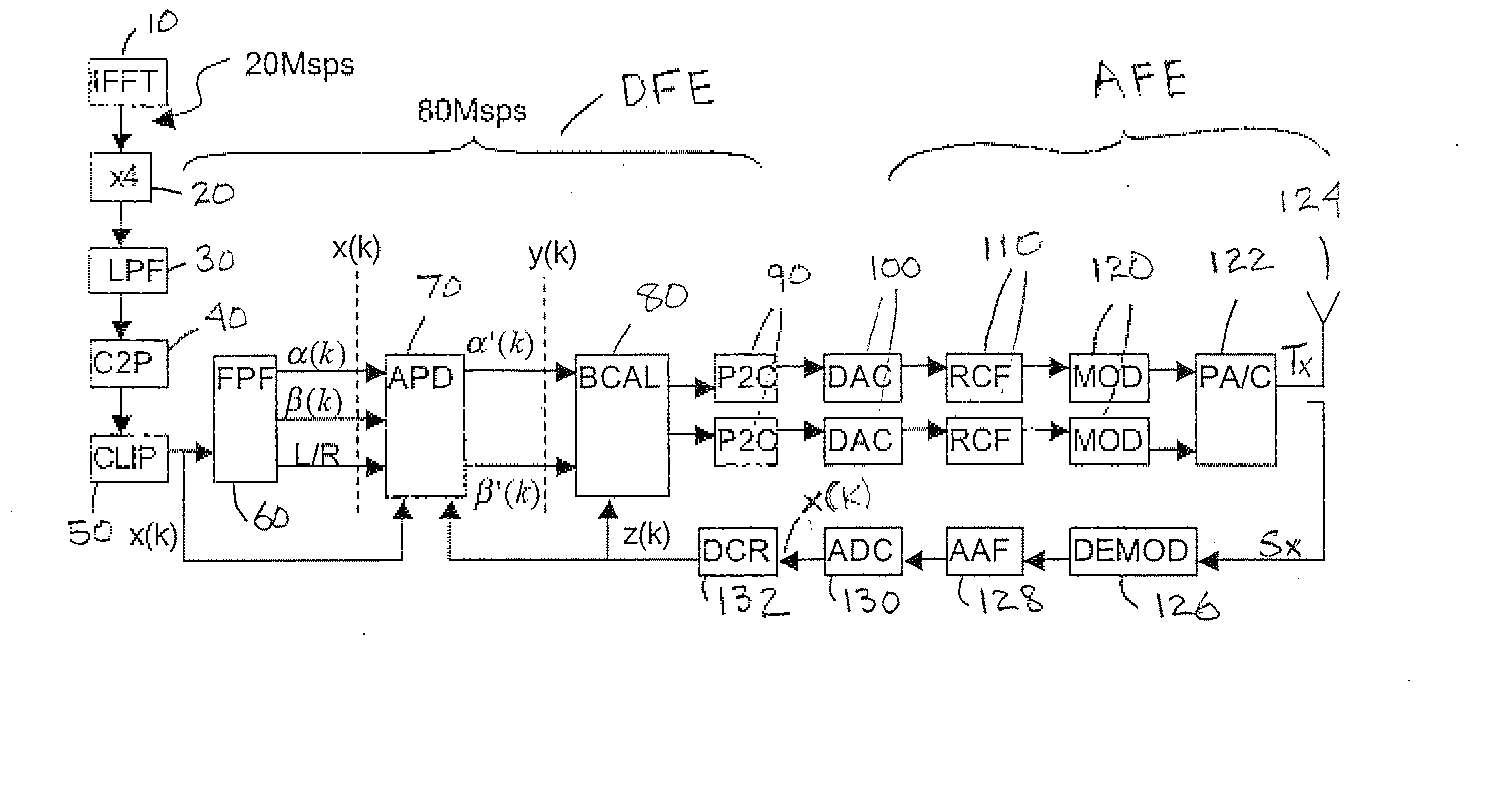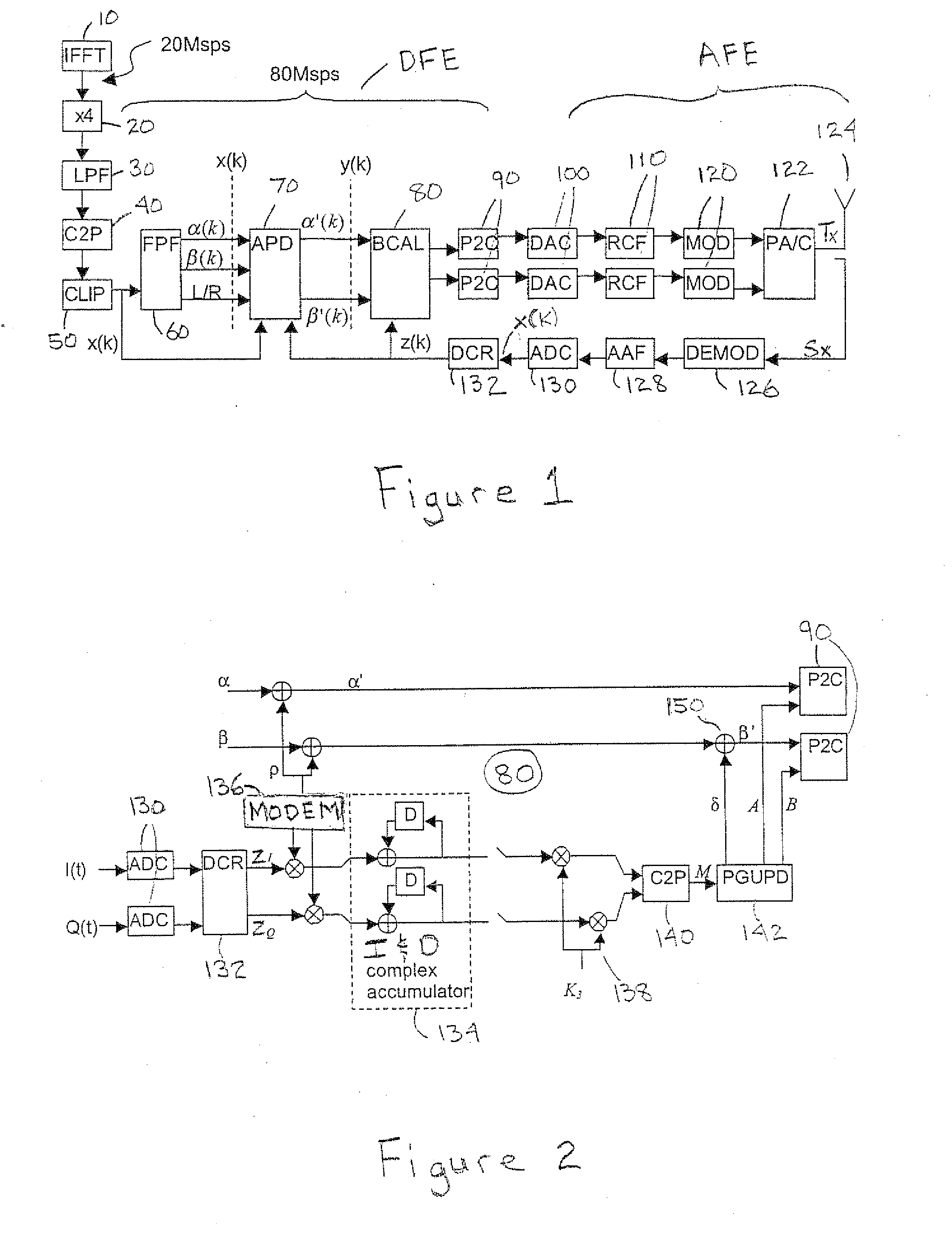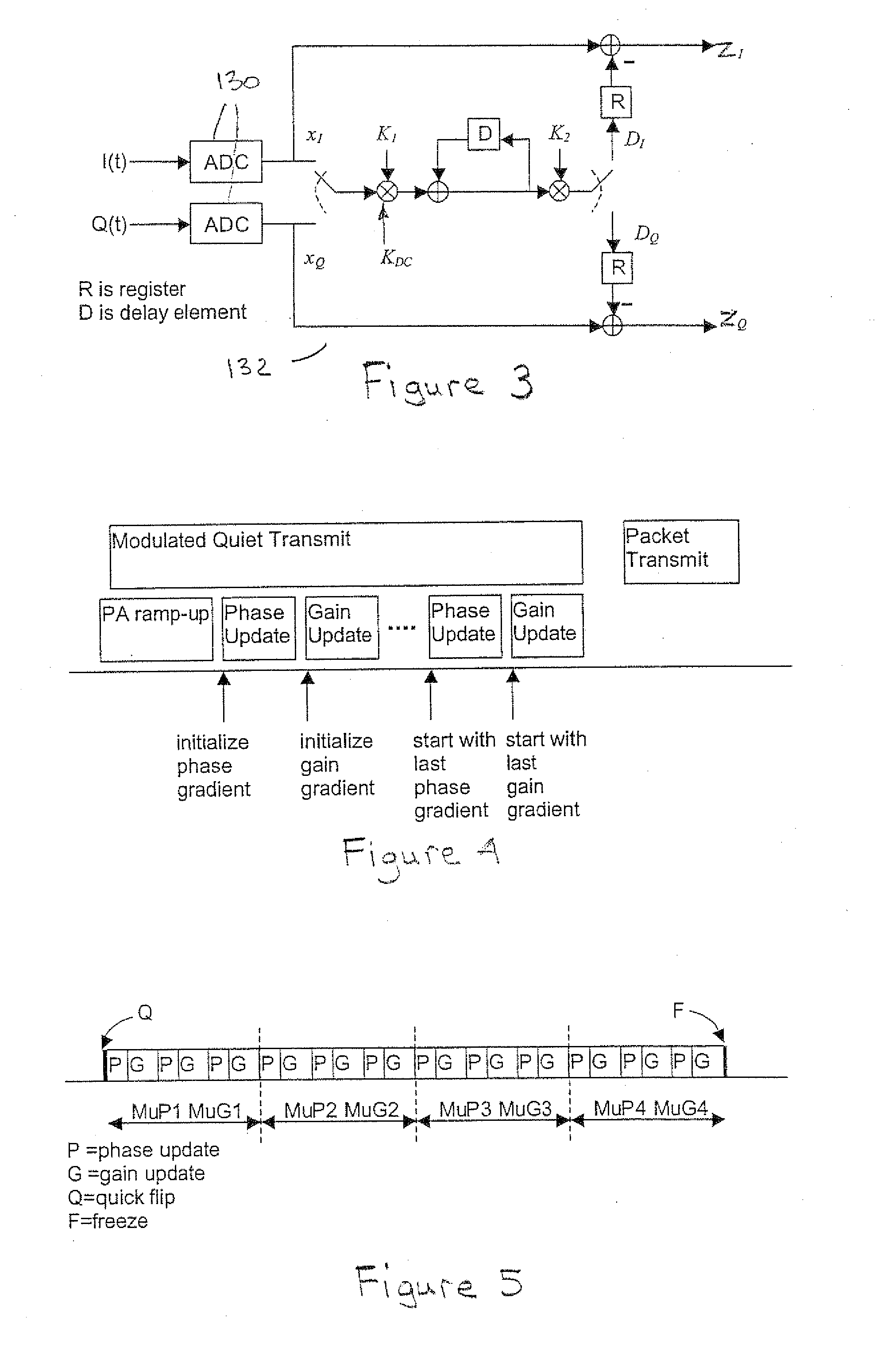Digital branch calibrator for an RF transmitter
a digital branch and transmitter technology, applied in the field of digital branch calibrators, can solve problems such as unfavorable phasor gain and phase imbalance, and the design of analog circuits is difficult, and the effect of such designs is not good
- Summary
- Abstract
- Description
- Claims
- Application Information
AI Technical Summary
Benefits of technology
Problems solved by technology
Method used
Image
Examples
Embodiment Construction
[0027]FIG. 1 is a block diagram of a transmitter circuit of which there is a digital front end (DFE) followed by analog circuitry (AFE) for RF modulation (up-conversion), power amplification and combining before transmission (radiation) from an antenna 124. As shown, in the digital front end an IFFT 10 block performs OFDM modulation on the information signal input thereto at the indicated rate of 20 Mega samples per second (Msps). An up-sampler component 20 increases the sample rate by four times to 80 Msps and the signal sample then passes through a low pass filter component 30. Cartesian-to-polar signal conversion 40 calculates the polar components corresponding to the quadrature (I and Q) signal components and a clipping process 50 clips signal peaks, both of these process being embedded within the phasor fragmenter component 60 (these being shown separately in FIG. 1 for illustrative purposes). The flipping phasor fragmenter (FPF) 60 (which is the subject of pending U.S. patent ...
PUM
 Login to View More
Login to View More Abstract
Description
Claims
Application Information
 Login to View More
Login to View More - R&D
- Intellectual Property
- Life Sciences
- Materials
- Tech Scout
- Unparalleled Data Quality
- Higher Quality Content
- 60% Fewer Hallucinations
Browse by: Latest US Patents, China's latest patents, Technical Efficacy Thesaurus, Application Domain, Technology Topic, Popular Technical Reports.
© 2025 PatSnap. All rights reserved.Legal|Privacy policy|Modern Slavery Act Transparency Statement|Sitemap|About US| Contact US: help@patsnap.com



